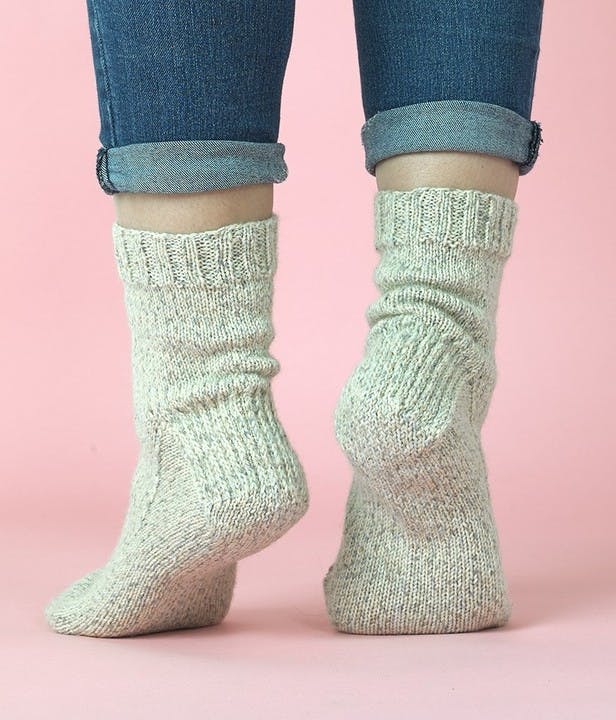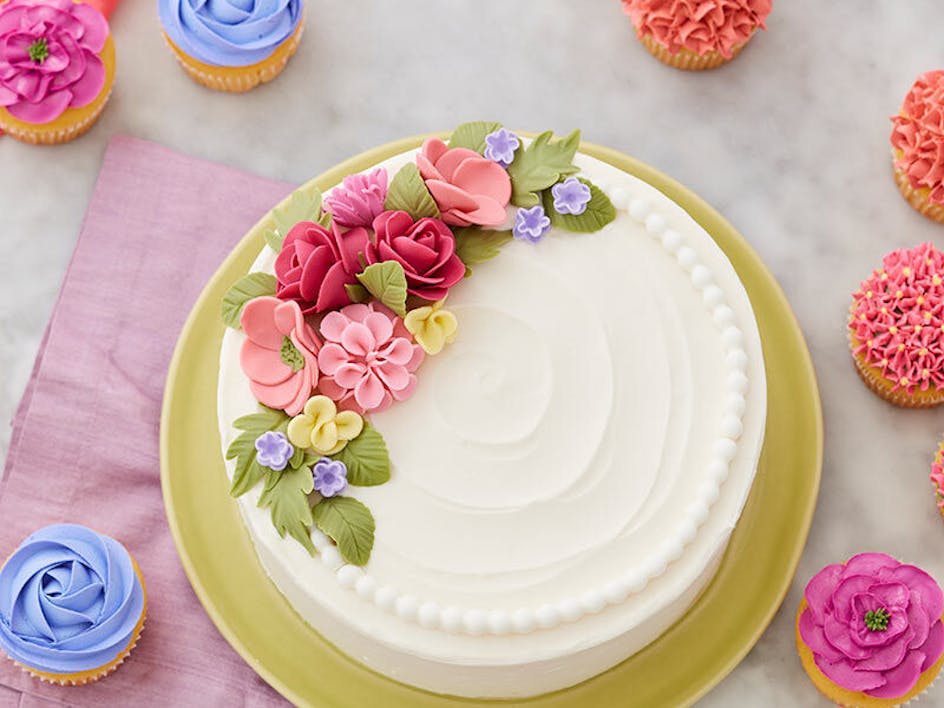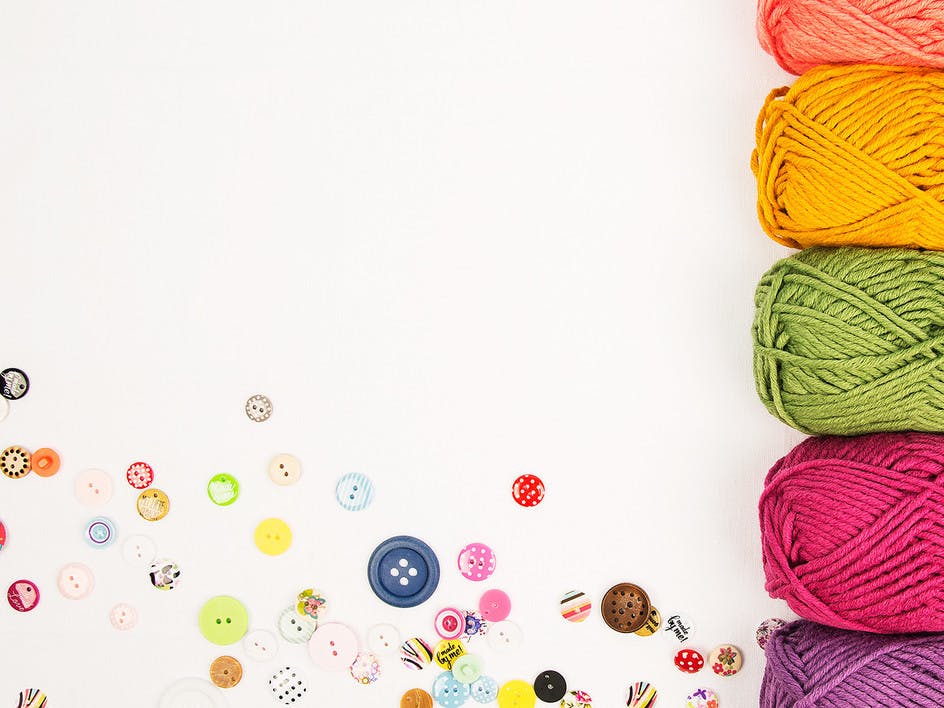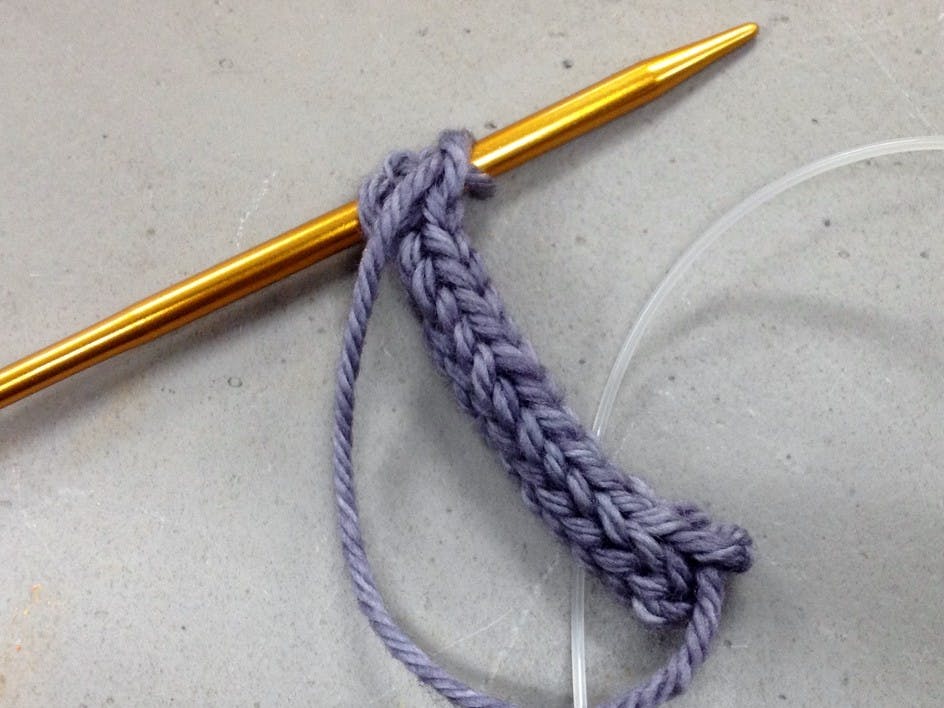5 ways to make using DPNs easier
Published on January 31, 2019 By Elizabeth Bagwell 3 min read
Knitting with double-pointed needles can be fiddly. Constant sock-knitter, Elizabeth Bagwell, describes 5 ways to make wrangling DPNs simple…
The first time you try knitting with double-pointed needles (DPNs) it can feel like juggling sticks to make a sock, or wrestling with a porcupine. There are pointy ends everywhere, and maybe a bit of swearing – and that’s before you drop a stitch. Here are 5 of my hard-won tips for dealing with the pointy beasts!
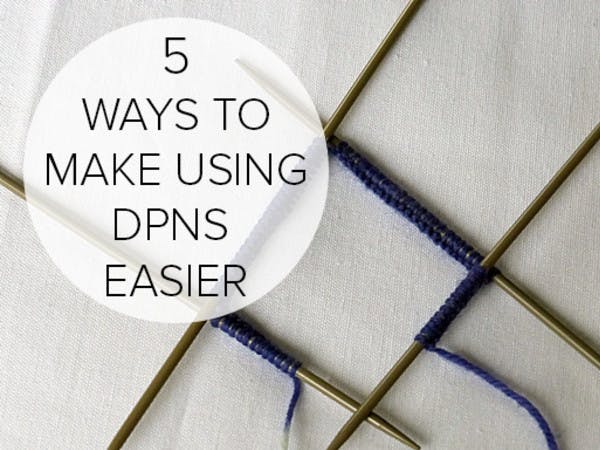
Pro tip: Cast on an extra stitch and knit the first and last stitch of the first round together, for a secure, gapless join." - Elizabeth Bagwell
Useful steps to follow
1. Cast on all stitches onto one needle
Once you’ve got the right number, spread them out appropriately.
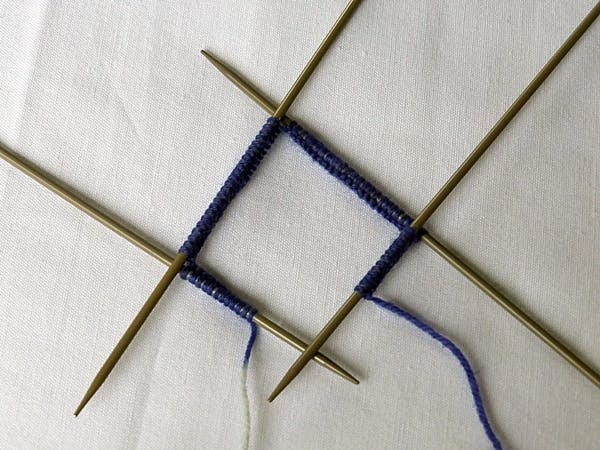
2. Start your round mid-needle
It’s tempting (and tidy) to start your round at the end of a needle, but this just means you’re dealing with all the problems (joining, new needle, closing the gap, twisted join, etc) at once. Start mid-needle and you’ve halved your worries.
Pro tip: Spot the cast on tail to find the start of the round.
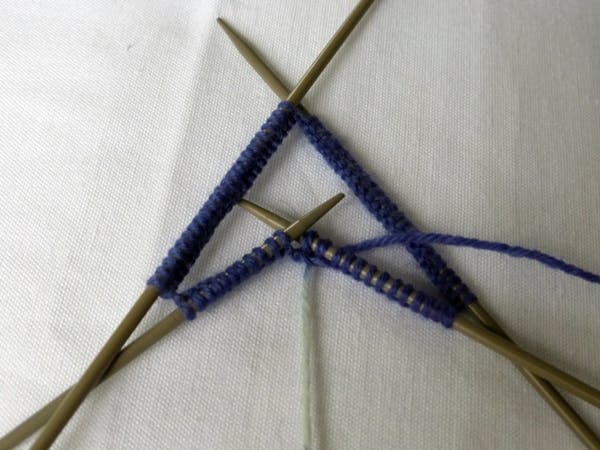
3. Use 4 DPNs, not 5
In engineering terms, a triangle is a more stable shape than a square. You can test this at home – tape 4 bits of card into a square, and it can bend or collapse, while a triangle can’t. When you knit with 4 DPNs, 3 needles hold the stitches in a triangle, and you knit with the fourth. With 5 DPNs, you make a square, which can flop about more. It’s a matter of preference though, so if 5 works for you, keep going.
Pro tip: Stash the 5th needle somewhere safe, and you’ll have a spare for when you lose one on the train.
4. Stop mid-needle
It’s tidier to stop at the end of a needle, but try to resist! Stopping mid-needle means that all your needles are engaged in the work, so you’re less likely to lose one down the sofa cushions, and also turns your stable triangle into a foldable square, letting you put your knitting away properly.
5. Use grippy needles
If you find your stitches sliding off the needles, it’s easier to switch needles than to teach yourself to knit more tightly. Bamboo or wooden needles grip stitches better than slick metal ones, and square needles are supposed to be particularly good grippers, while also being surprisingly comfortable to knit with.
Try it out!
Why not test your DPN skills and knit yourself a pair of socks with these free patterns?
